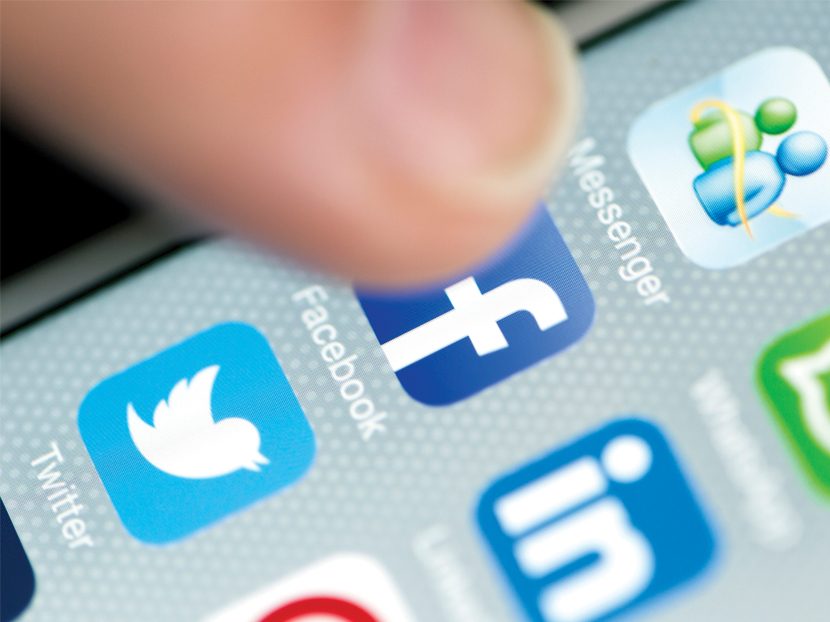Digital Door-Knocking
Use tools such as LinkedIn messaging and Facebook Messenger to spark one-on-one conversations with prospective B2B customers.

When I started my career 20 years ago, it was the golden era of all things digital. Companies were figuring out they needed a website, after a lot of arm-twisting. Then the disruption of social media made everyone’s head spin.
At the same time, a new concept called inbound marketing was getting a lot of attention.
I loved this.
As a creator who was always a bit introverted, the idea of sharing ideas, writing blogs and creating valuable content to bring prospects to me, instead of the traditional door-knocking methods of days old, was a breath of fresh air.
Seemingly overnight, the extroverted sales professional, with a passion for cold outreach, became a villain. No solicitation signs, do not call registries, the removal of landlines and the rise of new technologies helped protect people from these sales villains.
It’s been interesting to watch the gap slowly grow between generations of sales pros. On one end were the veterans who perfected the craft of going out to prospects, building relationships and enormous Rolodexes. On the other was a tech-savvy generation discovering social media who spoke in terms of lead generation, inbound marketing and sales.
Over the years, I’ve been knee-deep in a marketing world that throws a new shiny object into the mix almost daily.
I’m a firm believer in delivering value and the general concept and effectiveness of inbound marketing.
The idea is simple: share so much value that prospects can’t help but come to you. In other words, there’s no need to reach out cold to anyone when you can build content that drives awareness and sales and does so in a way that doesn’t interrupt or bother anyone.
Let me be clear: You should be creating content, sharing ideas, showcasing your expertise and driving inbound leads. I view this as an engine running 24/7 to build awareness, cultivate trust and position you and your organization as leaders.
For B2B sales, there’s one thing that beats everything else when it comes to growing sales.
Door-knocking.
Spoken like someone who’s lost his mind!
My thinking is clear. Crystal.
Going directly to your ideal prospects is the best way to grow sales. It’s about going out and introducing yourself and your organization to prospective customers you believe you can help, asking questions, and providing ideas and solutions.
Spoiler alert: We’re not talking about actual door knocking, although it’s always on the table. We’re in a digital age where you can go directly to prospects using tools such as LinkedIn messaging, Facebook Messenger, text messaging and email.
The most important thing is for this to be a one-to-one outreach.
An email blast or social media post from the company isn’t one-to-one. I’m talking about person-to-person, every step of the way.
It is not easy to accomplish. For starters, most people don’t like doing it. But the more significant challenge is how to scale one-to-one engagement without hiring more salespeople.
If you can put a system in place to consistently reach out, make introductions and follow up — the results can be remarkable.
So, this begs the question: How do you do it?
Here are two ideas you absolutely should run with starting tomorrow.
LinkedIn Messaging
LinkedIn offers access to B2B professionals unlike anything I’ve seen in my entire career. If you want to get in front of someone, you can probably do it on LinkedIn.
When you get up tomorrow, do an online search for the type of prospects you know you can help. Then reach out with a short introduction and invite them to connect with you.
In my workshops and with clients, I compare this to walking up to someone at a trade show or event, introducing yourself and exchanging business cards. Not everyone will give you a card, but a good percentage will if you have your targeting down.
Internally, we call this a connected conversation. It is when you and a prospective customer are either in a conversation or have agreed there may be some mutual benefit to being connected. In other words, you can communicate directly with each other.
If you reach out to just 10 targeted prospects every workday, that’s 50 introductions a week, 250 per month.
How many are you currently doing?
In my experience, if your targeting is dialed in, you’ll get 30 to 70 percent of prospects to connect with you (i.e., exchange a business card). That’s 75 to 175 connected conversations every month. How many targeted prospect business cards have you picked up over the past month?
When we execute these programs, we average 50 to 100 introductions every day. You can imagine the momentum that begins to snowball with consistency.
When you stop thinking in terms of lead generation and inbound, and start thinking in terms of sparking conversations, you begin to go down a path leading to deeper engagement and more opportunities.
Facebook Messenger
Imagine if you were able to spark those one-to-one conversations, but instead of you going to your prospects, they come to you!
“But Steve, isn’t that inbound?” you ask.
Kind of. The main difference here is we are driving prospects into a conversation as opposed to merely engaging with content.
Facebook enables you to get extraordinarily granular with your targeting. So, the next time you launch a campaign on Facebook and Instagram, you’ll want to look into Messenger ads.
We build creative, engaging, automated messenger bots for our clients that deliver value and put sales teams in a position to spark conversations.
It works like this:
Let’s say I’m a contractor who matches the profile of someone who would make a great customer. You can put information, in the form of an ad, right in front of me when I’m on Facebook or Instagram.
If you’ve done your job and put a value proposition in front of me, I just might click on your ad.
This is where the magic happens. Instead of going to a landing page or directly to your website, I would instantly open up Messenger, where you could deliver your message or additional value to me in the form of a download, link or whatever else might be helpful.
At this point, everything is automated — and for a good reason. You want to give your prospects the information they clicked about immediately. In many cases, automated bots can be built to offer a variety of options, questions and links to create an entertaining and valuable experience.
With Messenger, your team can and should be monitoring all engagement. In other words, similar to a text message, you will see every single time someone engages with your ad.
This means your team can chime in at any moment in real time, as a real person. For example, let’s say I clicked on an ad about cost savings. Your team could chime in and message me with something along the lines of, “Hey Steve, this is Amy. We automate a lot of this, but I’m on live right now. I see you were interested in some cost savings. Is there anything in particular I can help you with? I’m just outside Chicago as well, so if you’d like us to drop in, we’re happy to.”
This enables you to engage with prospects who are showing specific interests and needs. But instead of waiting for them to reach out, you can go directly to them and spark a conversation.
Technology and tools will continue to evolve for B2B sales professionals, but they will never replace one-to-one conversations.
At your next sales and marketing meeting, take a step back from leads, impressions, likes and inbound marketing.
Instead, challenge your team to come up with creative ways to spark more one-to-one conversations.




